
The church of Madonna del Prato is a Baroque-style Roman Catholic church in Gubbio, Umbria region, Italy.

The church of Madonna del Prato is a Baroque-style Roman Catholic church in Gubbio, Umbria region, Italy.
The church construction began in 1662 to house an image of the Madonna del Prato that was held to be miraculous. The plain façade with two statues does not prepare the visitor for the interior, which is a near-replica of the interior space and ordering of San Carlino alle Quattro Fontane, one of the masterpieces of Baroque architecture in Rome, by Francesco Borromini. The architectural plan is attributed to Carlo Perugini, but there is evidence Borromini may have played a direct role. [1] The dome, which in Rome is populated by geometric crosses, was frescoed by Francesco Allegrini and Louis Dorigny (1677–1678). The church also has altarpieces by Ciro Ferri, Gaetano Lapis, and Domenico Maria Viani. [2]

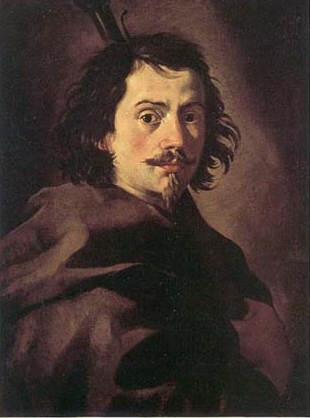
Francesco Borromini, byname of Francesco Castelli, was a Swiss architect born in the modern Swiss canton of Ticino who, with his contemporaries Gian Lorenzo Bernini and Pietro da Cortona, was a leading figure in the emergence of Roman Baroque architecture.

Baroque architecture is a highly decorative and theatrical style which appeared in Italy in the early 17th century and gradually spread across Europe. It was originally introduced by the Catholic Church, particularly by the Jesuits, as a means to combat the Reformation and the Protestant church with a new architecture that inspired surprise and awe. It reached its peak in the High Baroque (1625–1675), when it was used in churches and palaces in Italy, Spain, Portugal, France, Bavaria and Austria. In the Late Baroque period (1675–1750), it reached as far as Russia, the Ottoman Empire and the Spanish and Portuguese colonies in Latin America. In about 1730, an even more elaborately decorative variant called Rococo appeared and flourished in Central Europe.

Sant'Andrea della Valle is a minor basilica in the rione of Sant'Eustachio of the city of Rome, Italy. The basilica is the general seat for the religious order of the Theatines. It is located at Piazza Vidoni, at the intersection of Corso Vittorio Emanuele and Corso Rinascimento.

The Church of Saint Andrew on the Quirinal is a Roman Catholic titular church in Rome, Italy, built for the Jesuit seminary on the Quirinal Hill.
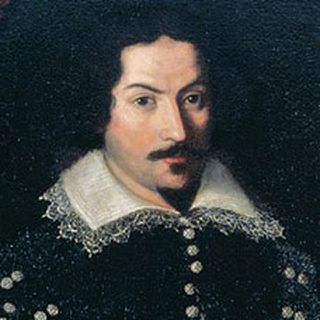
Carlo Maderno (Maderna) was an Italian architect, born in today's Ticino, who is remembered as one of the fathers of Baroque architecture. His façades of Santa Susanna, St. Peter's Basilica and Sant'Andrea della Valle were of key importance in the evolution of the Italian Baroque. He is often referred to as the brother of sculptor Stefano Maderno, but this is not universally agreed upon.

The church of San Carlo alle Quattro Fontane, also called San Carlino, is a Roman Catholic church in Rome, Italy. The church was designed by the architect Francesco Borromini and it was his first independent commission. It is an iconic masterpiece of Baroque architecture, built as part of a complex of monastic buildings on the Quirinal Hill for the Spanish Trinitarians, an order dedicated to the freeing of Christian slaves. He received the commission in 1634, under the patronage of Cardinal Francesco Barberini, whose palace was across the road. However, this financial backing did not last and subsequently the building project suffered various financial difficulties. It is one of at least three churches in Rome dedicated to San Carlo, including San Carlo ai Catinari and San Carlo al Corso.

Sant'Agnese in Agone is a 17th-century Baroque church in Rome, Italy. It faces onto the Piazza Navona, one of the main urban spaces in the historic centre of the city and the site where the Early Christian Saint Agnes was martyred in the ancient Stadium of Domitian. Construction began in 1652 under the architects Girolamo Rainaldi and his son Carlo Rainaldi. After numerous quarrels, the other main architect involved was Francesco Borromini.
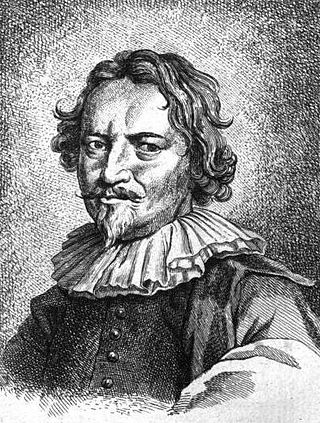
Carlo Fontana (1634/1638–1714) was an Italian architect originating from today's Canton Ticino, who was in part responsible for the classicizing direction taken by Late Baroque Roman architecture.

Sant'Ivo alla Sapienza is a Roman Catholic church in Rome. Built in 1642–1660 by the architect Francesco Borromini, the church is widely regarded a masterpiece of Roman Baroque architecture.

Carlo Marchionni was an Italian architect. He was also a sculptor and a virtuoso draughtsman, who mixed in the artistic and intellectual circles. He was born and died in Rome.

Santa Maria in Vallicella, also called Chiesa Nuova, is a church in Rome, Italy, which today faces onto the main thoroughfare of the Corso Vittorio Emanuele and the corner of Via della Chiesa Nuova. It is the principal church of the Oratorians, a religious congregation of secular priests, founded by St Philip Neri in 1561 at a time in the 16th century when the Counter Reformation saw the emergence of a number of new religious organisations such as the Society of Jesus (Jesuits), the Theatines and the Barnabites.

The Basilica of San Giovanni dei Fiorentini is a minor basilica and a titular church in the Ponte rione of Rome, Italy.

Santi Luca e Martina is a church in Rome, Italy, situated between the Roman Forum and the Forum of Caesar and close to the Arch of Septimus Severus.
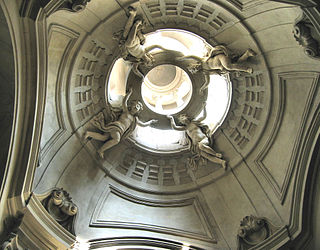
Antonio Gherardi was an Italian painter, architect, and sculptor (stuccoist) of the Baroque style, active mainly in and near Rome and his native city of Rieti.
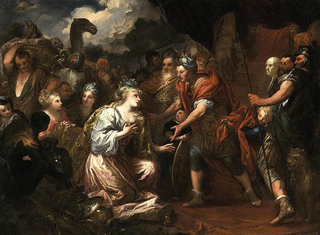
Pietro Dandini was an Italian painter of the Baroque period, active mainly in Florence.

The Palazzo di Propaganda Fide is a palace located in Rome, designed by Gian Lorenzo Bernini, then Francesco Borromini. Since 1626, it has housed the Congregation for the Evangelization of Peoples and since 1929 is an extraterritorial property of the Holy See. The complex includes a dormitory and chapel as well.

Italian Baroque architecture refers to Baroque architecture in Italy.
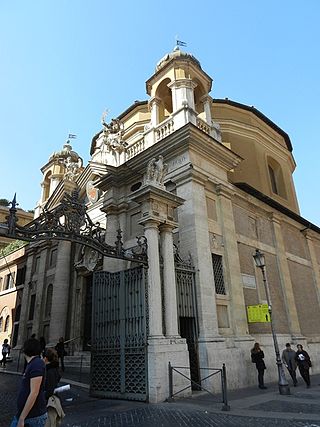
The Church of Saint Anne in the Vatican, known as Sant'Anna de' Palafrenieri, is a Catholic parish church dedicated to Saint Anne in Vatican City. The church is the parish church of the State of Vatican City and is placed under the jurisdiction of the Vicariate of the Vatican City and is located beside the Porta Sant'Anna, an international border crossing between Vatican City State and Italy.

Angelo Italia was an Italian Jesuit and Baroque architect, who was born in Licata and died in Palermo. He designed a number of churches in Sicily, and later worked to reconstruct three cities following the 1693 Sicily earthquake.
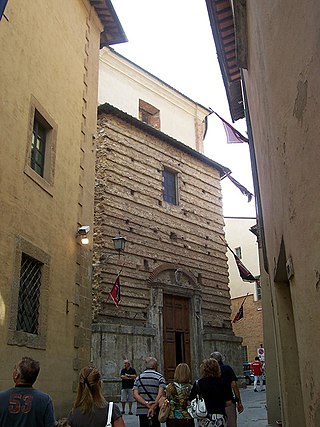
The church of the Gesù, also known as the Parish church of the Santissimo Nome di Gesù is a Baroque style, Roman Catholic church located on Via di Voltaio #101 in central Montepulciano, region of Tuscany, Italy.